1. Oracle Areas
1.1. Supply
1.1.1. Advanced Supply Chain Planning
1.1.1.1. Planning
1.1.1.2. Scheduling
1.1.2. Inventory Optimization
1.1.3. Production Scheduling
1.1.4. Manufacturing Operations Center
1.1.5. Advanced Procurement
1.1.5.1. Spend Analytics
1.1.5.1.1. maps raw data into reference taxonomies
1.1.5.1.2. creates spending patterns
1.1.5.1.3. insights into supplier performance
1.1.5.1.4. dashboard
1.1.5.2. Online Sourcing
1.1.5.2.1. SaaS adoption in Supply Mngmt
1.1.5.2.2. 24% CAGR
1.1.5.2.3. Enhancements
1.1.5.2.4. Sourcing Optimization
1.1.5.3. Procurement Contracts
1.1.5.3.1. enahancements
1.1.5.3.2. contract lifecycle
1.1.5.3.3. types
1.1.5.4. Supplier Collaboration
1.1.5.4.1. iSupplier portal
1.1.5.4.2. iProcurement
1.1.5.5. major components
1.1.5.5.1. Core purchasing
1.1.5.5.2. e-Procurement
1.1.5.5.3. Service Procurement
1.1.5.5.4. Supplier portal
1.1.5.5.5. Sourcing
1.1.5.5.6. Contracts
1.1.5.5.7. Supplier Network
1.1.5.5.8. Spend Analytics
1.1.6. Manufacturing
1.1.6.1. modes
1.1.6.1.1. discrete mfg
1.1.6.1.2. process mfg
1.1.6.1.3. flow/lean mfg
1.1.6.2. tracking
1.1.6.2.1. Project tracking
1.1.6.2.2. lot/serial genealogy tracking
1.1.6.2.3. e-signature
1.1.6.2.4. e-records/quality
1.1.6.3. Solution parts
1.1.6.3.1. Manufacturing Execution System (MES)
1.1.6.3.2. Integrated Real-time Analytics
1.1.6.3.3. Production Execution
1.1.6.4. CAGR 14%
1.1.7. Warehouse Management System
1.1.7.1. Receive, Inspect, Putaway
1.1.7.2. Label, Replenish, Move, Count, and Assemble
1.1.7.3. Pick, Pack, Ship
1.1.8. Oracle Transportation Management
1.1.8.1. Plan across multiple delivery legs
1.1.8.2. Inbound and outbound flows
1.1.8.3. Manage delivery fleet
1.1.8.3.1. internal
1.1.8.3.2. 3rd party (LSP)
1.1.9. Collaborative Planning
1.1.10. Service Parts Planning
1.2. Demand
1.2.1. Order Management
1.2.1.1. Pricing
1.2.1.2. Configuration
1.2.1.3. Workflow Driven Process
1.2.1.3.1. Configure
1.2.1.3.2. Price
1.2.1.3.3. Availability (ATP)
1.2.1.3.4. Schedule
1.2.1.3.5. Planning Delivery/Trip
1.2.1.3.6. Pick, Pack, & Ship
1.2.1.3.7. Track Delivery
1.2.1.3.8. Invoice
1.2.1.3.9. Payment
1.2.2. Demantra Demand Management
1.2.2.1. Forecasting
1.2.2.2. Collaborative Workbench
1.2.2.3. Vendor Managed Inventory (VMI)
1.2.3. Demantra Trade Promotion Management
1.2.4. Demand Signal Repository
1.2.5. Global Order Promising
1.3. Product
1.3.1. Agile Enterprise PLM
1.3.1.1. Accelerate Time to Market
1.3.1.2. Reduce cost
1.3.1.2.1. material cost
1.3.1.2.2. reuse item parts
1.3.1.2.3. waste and rework
1.3.1.3. PLM umbrella
1.3.1.3.1. Product Portfolio Management
1.3.1.3.2. Engineering Collaboration
1.3.1.3.3. Enteprise Visualization
1.3.1.3.4. Product Collaboration
1.3.1.3.5. Product Cost Management
1.3.1.3.6. Quality Management
1.3.1.3.7. Product Governance and Compliance
1.3.2. Prodika
1.4. Nexus of Demand, Supply and Product
1.4.1. Real time S&OP
1.4.2. Strategic Network Optimization
1.4.3. Advanced Planning Command Center
2. Technical Niche
3. OeBS
3.1. Plan
3.1.1. MinMax
3.1.2. ReorderPoint
3.1.3. Kanban
3.1.4. Material Requirements Planning
3.1.5. Manufacturing Resource Planning
3.1.6. Advanced Supply Chain Planning
3.1.7. Advanced Planning and Scheduling
3.2. Source
3.2.1. RFQ
3.2.2. RFI
3.2.3. Auction
3.2.4. Sourcing Rules
3.3. Make
3.3.1. Discrete
3.3.2. Process
3.4. Deliver
3.4.1. Warehouse
3.4.2. Transportation
3.4.3. Landed Cost
3.5. Return
3.5.1. RMA
3.5.2. Warranty
4. distinctive advantages
4.1. value chain planning
4.1.1. predict market
4.1.1.1. sense demand closer to point of consumption with real-time visibility
4.1.1.2. improve forecast accuracy
4.1.1.2.1. advanced analytics
4.1.1.2.2. improved consensus
4.1.1.3. holistic supply chain network
4.1.1.3.1. simulation of unplanned
4.1.1.3.2. risk mitigation of bottlenecks
4.1.1.4. hedge strategy
4.1.1.4.1. account for variability
4.1.2. shape demand
4.1.2.1. promotion planning
4.1.2.2. seasonality
4.1.2.3. new product introductions
4.1.2.4. continuous Sales and Operations balancing
4.1.3. align operations
4.1.3.1. sync plans across whole company
4.1.3.2. improve visibility of supply chain
4.1.3.3. collaboration with trading partners
4.1.3.4. ATP on global item availability
4.1.3.5. closed-loop Supply Chain operations
4.2. industries
4.2.1. High Tech
4.2.2. Industrial Mfg
4.2.3. Automotive
4.2.4. Aerospace and Defense
4.2.5. Consumer Goods
4.2.6. CPG - Food and Beverages
4.2.7. Medical Devices
4.2.8. Chemicals
4.2.9. Retail
4.3. e-Business Suite Wheel
4.3.1. Achieve Rapid Return
4.3.1.1. Procurement
4.3.1.1.1. Identify Top Savings Opportunities
4.3.1.1.2. Optimize Strategic Sourcing
4.3.1.1.3. Exploit Supply Market Dynamics
4.3.1.2. Supply Chain
4.3.1.2.1. complete value chain
4.3.1.2.2. optimize manufacturing operations and asset utilization
4.3.1.2.3. increase logistics efficiency and track/control costs
4.3.1.3. Applications Technology
4.3.2. Standardize and Simplify
4.3.2.1. Human Capital
4.3.2.2. Customer and Master Data Mngmt
4.3.2.3. Financials and Projects

